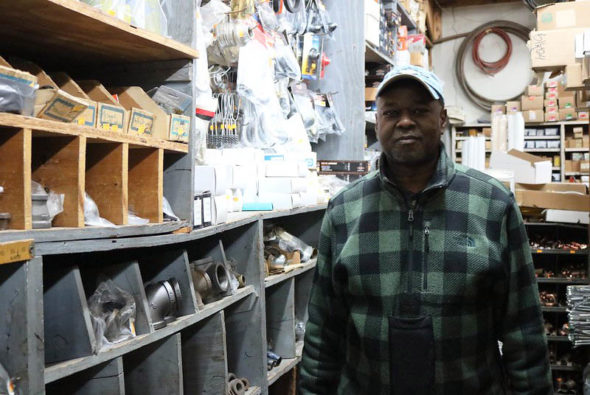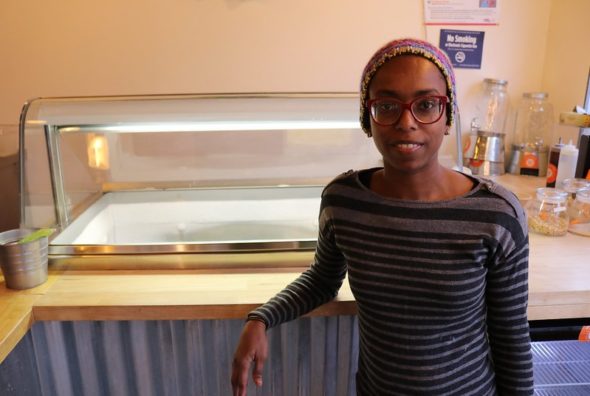A cold breeze hit the commuters who exited the subway station at Nostrand Avenue and Fulton Street in Crown Heights, Brooklyn yesterday afternoon. The temperature was 36 degrees, cold enough for New Yorkers to zip up their coats, but unusually warm for the start of February.
According to the National Weather Service, this is the warmest winter of the last 40 years in New York and 47 other states. Last year, on this same date, the average temperature in the city was 13 degrees.
Samuel Dee, 66, has run the County Pharmacy on Nostrand Avenue for more than 25 years. For Dee, warm winter weather means change in his clients’ needs.
“The temperature is a big determinant of what people can catch,” Dee said. Approximately 50 clients come in every day during winter, and between 60 and 65 visit him daily during spring to treat their allergies.
“This year, we have sold a lot less of the most commonly used antibiotics to treat colds and much more cough medicine and injections, which people need to treat the flu,” said Dee. “Temperatures below 20 degrees are too cold for flu to spread. That is when you see a significant increase in colds. In [this year´s] temperature, you see either both or more severe cases of flu.”
The pharmacist explained sales of facemasks are rising. His customers are worried about the Coronavirus. The city has seen its third suspected case of the rapidly spreading virus.
According to the World Meteorological Organization global warming has caused an increase of 33 degrees in the world’s temperature in the last five years. Still, there is no direct link between long-term global trends and short-term variations we experience from day to day. Wind speed, humidity, atmospheric pressure, and the soil’s absorption of sun rays determine the weather.
Alysta Garvey, 70, the owner of Garvey’s Hardware, has done plumbing work in Brooklyn since 1980. He said winter is typically peak time for his business—but not this year.
“Since this winter has not been that cold, the stress on the pipes around here has been less than usual, he said. “We haven’t gotten calls about burst or frozen pipes, and I don’t remember any other winter when this had happened. Luckily, we still get a lot of calls about radiators and heaters.”

Alysta Garvey, owner of Garvey’s Hardware in Crown Heights, Brooklyn, said warm winters has kept pipes from bursting. Photo by Ximena Del Cerro
But the winter is far from ending. The Climate Data Organization forecasts the next snowfall for Wednesday even though the temperature will not drop below 32 degrees.

Business in the winter is always slow for Shelley Marshawn, the owner of Island Pops, an ice cream store in Crown Heights Brooklyn.
For Shelley Marshawn, 34, winter always means a drop in business. She is the owner of Island Pops, an ice cream store on the corner of Nostrand Avenue and St. Marks Avenue and from October to March, her work mostly consists of making coffee.
“It is not very cold outside, but people are still in a winter mindset, and they don’t buy much ice cream during these months,” said Marshawn. “With the exception of a couple of weekends during January, when we sold a few cones and pints, this winter is no different for the business.”


